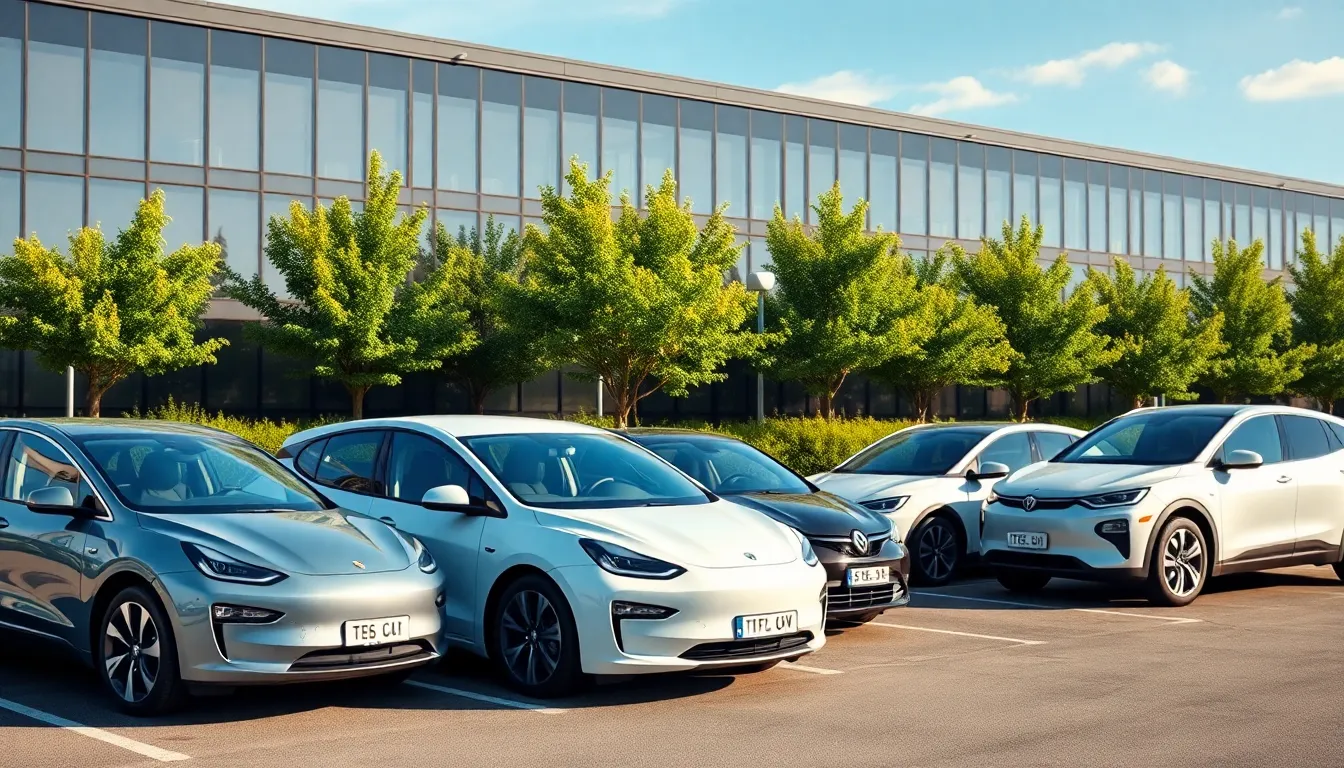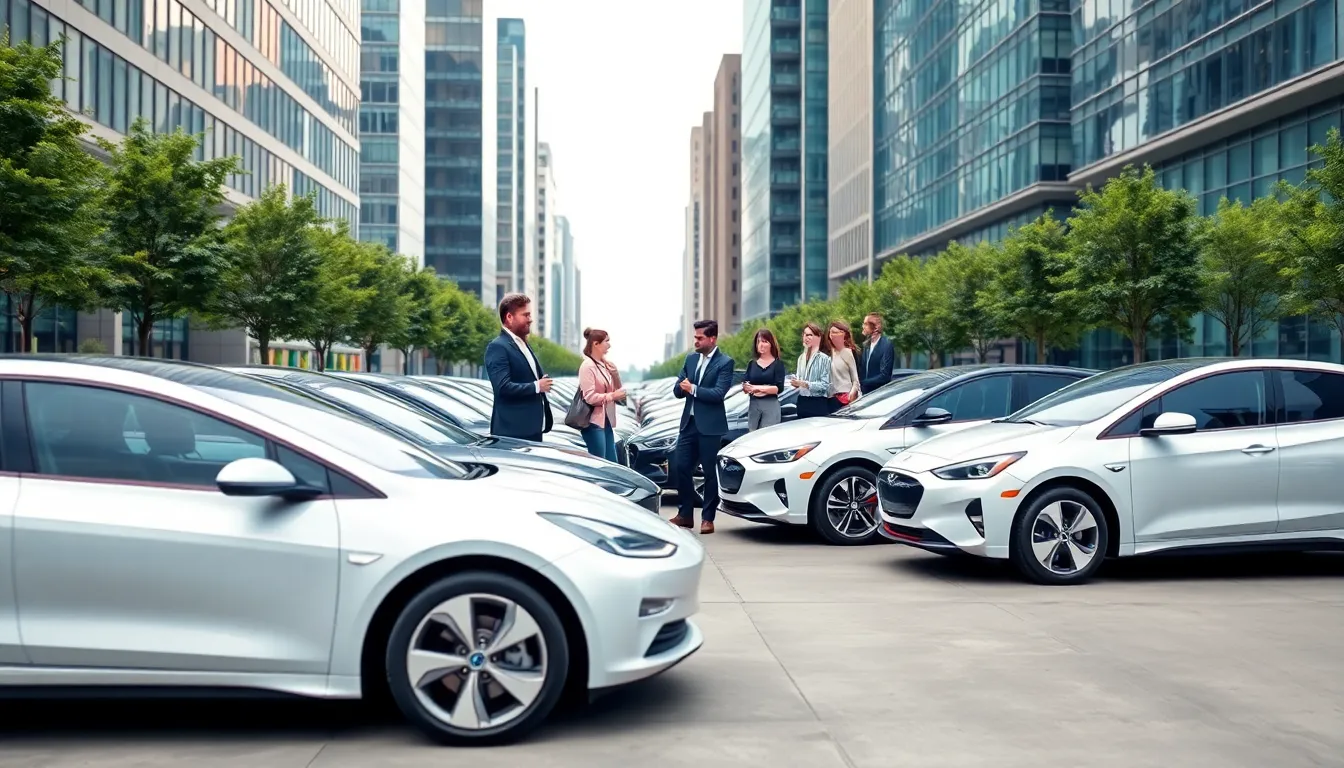Picture this: a fleet of sleek electric vehicles zipping around town, leaving nothing but envy in their wake. It’s not just about looking cool, even though they definitely do. Electric vehicle fleets represent a revolution in how businesses can save money, boost their image, and contribute to a cleaner planet. If you’ve been living under a rock, it’s time to get on the electric bandwagon. This article will highlight the perks, challenges, best practices, and future trends of transitioning to electric vehicle fleets. Buckle up: it’s going to be a thrilling ride.
Table of Contents
ToggleAdvantages Of Electric Vehicle Fleets

Cost Savings Over Time
One of the biggest draws for companies considering a fleet of electric vehicles is the long-term cost savings they offer. While the initial price tag might raise an eyebrow or two, don’t be misled. Lower operational costs, reduced fuel expenses, and less frequent maintenance translate to significant savings down the line. Electric vehicles typically require less maintenance than traditional gasoline-powered cars. No oil changes? Yes, please.
Reduced Emissions and Environmental Impact
Adopting electric vehicle fleets is more than just a smart financial move: it’s a step in the right direction for the environment. Electric vehicles produce zero tailpipe emissions, helping businesses lower their carbon footprint. As cities grapple with pollution and climate change, a fleet of electric vehicles can serve as a powerful marketing tool, showcasing a company’s commitment to sustainability. The numbers are clear: reducing emissions never looked so good.
Enhancements in Brand Image and Customer Perception
When a company switches to an electric vehicle fleet, it sends a strong message: they care about the planet and are leading the charge towards sustainability. This pivot not only attracts eco-conscious customers but also strengthens brand loyalty among existing clients. In today’s world, where consumers are more aware than ever, having an electric fleet is more than just a trend: it’s an essential part of being a responsible business.
Challenges In Transitioning To Electric Vehicle Fleets
Initial Investment and Infrastructure Requirements
While the benefits are alluring, transitioning to an electric vehicle fleet isn’t all sunshine and rainbows. The initial investment can be steep, sparking hesitations among business owners. Charging infrastructure, although steadily improving, can prove to be a logistical headache. Many companies find themselves wondering, “Where will we install our chargers?” Before diving in, it’s essential to assess existing facilities and local regulations related to charging installations.
Charging Station Availability and Technology
Even though electric-driven vehicles gaining traction, charging stations remain a challenge in many regions. The disparity between urban and rural charging options can leave companies stuck, quite literally. Also, staying updated on the latest charging technology is crucial. Will fast charging stations meet your fleet’s needs? Investing in the right technology is as critical as the vehicles themselves. It’s not enough just to have the vehicles: the infrastructure needs to support them.
Maintenance and Support Considerations
Don’t let the allure of electric vehicles fool you, maintenance is still a part of the picture. Although electric vehicles often incur lower repair costs, businesses will need specialized training for staff to handle these vehicles. Finding a trustworthy maintenance partner familiar with electric vehicle technology can be challenging. Companies should plan for these aspects to avoid potential hiccups down the road.
Best Practices For Implementing An Electric Vehicle Fleet
Conducting A Feasibility Study
Before embarking on this electrifying journey, businesses must conduct a thorough feasibility study. Evaluating factors such as costs, existing infrastructure, and potential savings will provide invaluable insights. Engaging stakeholders in the planning phase will ensure everyone is on board, avoiding resistance later on. Think of this as building a strong foundation for your electric dreams.
Choosing The Right Models and Technology
Not all electric vehicles are created equal. Selecting the right models to match your specific operational needs is key. Some models excel in urban environments, while others are better suited for long-haul logistics. Businesses must carefully consider range, cargo capacity, and technology features to find the perfect fit. Don’t shy away from testing out different models, hands-on experience can go a long way.
Employee Training and Engagement
Adopting a fleet of electric vehicles isn’t just about the cars themselves: it involves people too. Employee buy-in is critical for the successful transition. Creating training programs to ensure all staff members understand how to operate and maintain the vehicles will pay off in the long run. Also, fostering a culture of sustainability within the organization can lead to enthusiastic support for the transition.
Future Trends In Electric Vehicle Fleets
Integration With Renewable Energy Sources
As the world increasingly turns to renewable energy, electric vehicle fleets are poised for an exciting future. Integrating these vehicles with solar or wind energy systems can further reduce operational costs and enhance sustainability. Imagine powering your entire fleet from solar panels installed on your rooftop. It’s not just possible: it’s the future of transportation.
Advancements in Battery Technology
Battery technology is evolving at a breakneck pace, and this will play a crucial role in the electric vehicle landscape. Lighter and more efficient batteries mean longer ranges and reduced charging times. Future advancements could make electric vehicles as fast and convenient as their gasoline counterparts, propelling them into even greater mainstream acceptance.
Policy and Regulatory Developments
Government policies can make or break the electric vehicle market. Incentives like tax credits, grants, and emissions regulations will continue shaping how companies view electric vehicles in their fleets. Staying updated on regulatory developments is essential for maximizing benefits and compliance. Companies will need to adapt quickly, but those who do will lead the pack.



